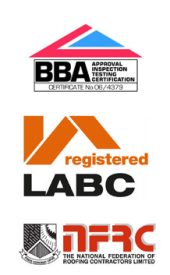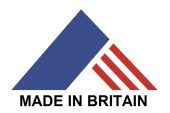These are covered by Approved Document Part L1B 2010. This states that in England and Wales each element must be insulated to achieve a level of heat loss, or U-value, as shown in the table.
| Element | U-value required W/m².K |
| Cold roof area, insulation above ceiling | 0.16 |
| Dwarf wall | 0.28 |
| Pitched roof, sloping ceiling | 0.18 |
| Flat roof dormer | 0.18 |
| Dormer cheek | 0.28 |
Generally, Local Authority Building Control will require these U-values to be achieved. Similar values operate in Northern Ireland and Scotland.
When a house is to be re-roofed or at least 50 percent of the roof area is to be repaired a requirement is triggered in Part L1B to upgrade the thermal performance to the levels above.
It may, however not be possible to deliver a thermal performance upgrade to Building Regulation standards in all instances – perhaps the roofline cannot be raised since the house is either semi-detached or terraced, or a historic building whose appearance cannot be altered – and there may be a need for the roof insulation to remain breathable. In these circumstances, it may be permissible to reach a lesser U-value, but these must be agreed with the Local Authority Building Control.
New build houses are covered by Approved Document L1A and the Code for Sustainable Homes. This approach uses a SAP process to calculate the carbon emissions of the whole house.
From 2010, private sector houses must meet Code level 3 and public sector houses Code level 4. In 2013 this changes, and private sector houses must meet Code level 4 and public sector houses Code level 6. From 2016 all new houses must reach Code level 6. The U-values of each element of the building are flexible, provided the whole house meets the standard, but the U-values need to comply will be typically:
| Code level | Pitched roof | Wall | Air permeability | Thermal bridging |
| 3 | 0.18 | 0.24 | Reduced | Reduced |
| 4 | 0.16 | 0.20 | Reduced | Reduced |
| 6 | 0.16 | 0.16 | Maximum possible reduction | Maximum reduction |
TLX Silver helps to meet the required U-values when used in conjunction with other insulation such as mineral fibre or rigid board. TLX Silver is particularly effective at reducing air permeability by sealing across timber studs and rafters and by wrapping around junctions.
Approved Document C2 Resistance to Moisture (6.10) states that a roof will resist damage from interstitial condensation if it is constructed in accordance with BS5250. A condensation risk analysis should be carried out on any proposed renovated roof structure. In addition, excessive moisture transport into the roof through moist air movement must be avoided by sealing junctions, gaps and service penetrations.
Regulation 7 Materials and Workmanship states that building work should be carried out with adequate and proper materials. To ensure a material is suitable, it should comply with British or other national standards, be covered by a certificate issued by an ETA issuing body (such as BBA or DIBt), have a CE mark, or be certified by a UKAS accredited body.



© Copyright 2024. All Rights Reserved.
| Cookie | Duration | Description |
|---|---|---|
| cookielawinfo-checkbox-analytics | 11 months | This cookie is set by GDPR Cookie Consent plugin. The cookie is used to store the user consent for the cookies in the category "Analytics". |
| cookielawinfo-checkbox-functional | 11 months | The cookie is set by GDPR cookie consent to record the user consent for the cookies in the category "Functional". |
| cookielawinfo-checkbox-necessary | 11 months | This cookie is set by GDPR Cookie Consent plugin. The cookies is used to store the user consent for the cookies in the category "Necessary". |
| cookielawinfo-checkbox-others | 11 months | This cookie is set by GDPR Cookie Consent plugin. The cookie is used to store the user consent for the cookies in the category "Other. |
| cookielawinfo-checkbox-performance | 11 months | This cookie is set by GDPR Cookie Consent plugin. The cookie is used to store the user consent for the cookies in the category "Performance". |
| viewed_cookie_policy | 11 months | The cookie is set by the GDPR Cookie Consent plugin and is used to store whether or not user has consented to the use of cookies. It does not store any personal data. |
Error: Contact form not found.